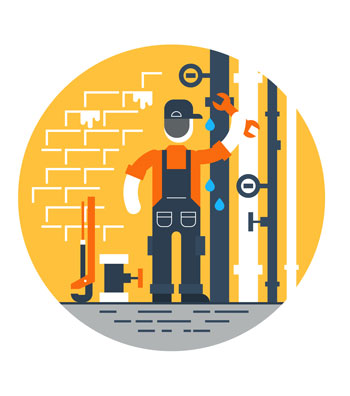Basements house a lot of plumbing hardware, from water heaters to washers and dryers to extra bathrooms, and beyond. Just as you’d keep an eye on the plumbing in the rest of your house proper, your basement deserves similar attention—in fact, many experts would add, even more so. The following are tips to maintain your basement plumbing, in no particular order.

Install shock absorbers on basement pipes to quell vibrations and quiet water hammering.
Keep a Basement Plumbing Checklist
Because your basement is most likely home to your water meter, your septic tank, and your washing machine, it is important that you check these essential components regularly to make sure that they are in good working order. As such, the following preventative measures should be performed:
- Periodically pour a bucket of water down your basement floor drain to keep the trap seal full and to prevent sewer gases from backing up into your house.
- Check your washing machine hoses for tears or leaks and replace them as necessary.
- Inspect and pump your septic tank every three-to-five years to prevent a potentially costly replacement of the filter field down the road.
- Check your water meter during a period of inactivity, when no water is being used, by taking note of the meter reading during a period of 5 hours or more; if the reading has changed during that time, it may be a sign of a leak.
- Install shock absorbers that absorb vibrations in your water lines to stop or prevent annoying water hammer noises.
Pay Close Attention To These Components
Some basement plumbing components require extra attention—namely your water meter and water heater—to ensure they are functioning properly. In addition to periodically checking for leaks in your water meter, it’s essential that you know where the main shutoff valve is for the meter itself and to make sure it works. The shutoff valve is typically located near the main water supply pipe and works by hand; there may also be an additional shut-off outside of the house.
When it comes to your water heater, the following specific procedures should be performed annually:
- To remove sediment that can be corrosive and reduce heating efficiency, drain several gallons of water from the tank to flush your water heater.
- Test the pressure relief valve on the heater by lifting the lever and letting it snap back into place. If the valve does not allow a burst of water into the drainpipe, you will need to have it replaced.
Performed together regularly, and meticulously, all of these measures will help your home maintain fully functioning basement plumbing. Have questions or concerns? Contact our friendly team at Meticulous Plumbing today!


